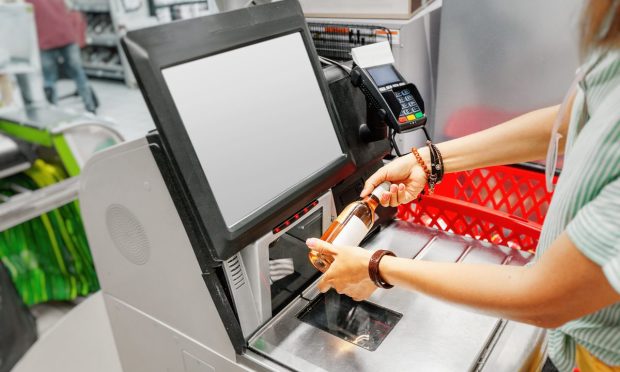Instacart’s FoodStorm Taps Self-Service to Bring the Digital Shift Into Stores

The digital shift continues to sweep through the grocery industry, turning stores into omnichannel hubs. On Thursday (Oct. 7), Instacart announced the acquisition of catering software company FoodStorm. With the latter’s goal to open up additional revenue opportunities for grocers, helping to speed up their digital transformation, it makes a natural fit for the online grocery giant.
Read more: Instacart Acquires Catering Software Company in Push to Compete With Restaurant Aggregators
“With the grocery industry seeing a huge rush of positive public sentiment over the last year, many companies are wanting to capitalize on attention and develop or grow different revenue streams,” FoodStorm CEO Robert Hill told PYMNTS in an interview. “By offering catering options, bakery orders, prepared meals and holiday packages, grocers could realize serious income, and FoodStorm is uniquely built to manage that.”
While the company may be known for its software as a service (SaaS) order management system (OMS), it is also part of another quickly growing trend in the grocery industry — the rise of self-service checkout. The company launched its self-checkout kiosk in June.
In fact, research from the PYMNTS study Today’s Self-Service Shopping Journey: The New Retail Expectation, created in collaboration with Toshiba, which surveyed more than 2,000 United States consumers about their preferences for different shopping channels, found 80% of consumers want to try alternative checkout options such as self-service. This market is under-penetrated — the study found that 41% of consumers who use traditional checkout lines do so because it is the only option available.
See also: Consumers Want Self-Service Checkout Options But Rarely Get to Use Them
“Now more than ever consumers’ preference for self-service technologies is at the forefront of what feels like all goods and services industries,” Hill said, highlighting consumers’ ongoing and ever-fluctuating contagion concerns. “Businesses need to adapt and offer a range of self-service, online-based and COVID-safe technologies.”
eCommerce Inside Stores and Out
In the same vein, Hill views the rise of self-service technologies not as a separate trend from the online ordering boom but as part and parcel of the same whole. He noted that, overall, the goal is to provide consumers as many options as possible for how they want to purchase their goods, making it easier for consumers to find channels that meet their expectations of convenience and their need to feel safe, “whether that be putting much of your offering online in an eCommerce fashion, setting up grocery delivery services or implementing in-store kiosks or self-checkout stands.”
To that point, PYMNTS research from the study What Consumers Expect From Their Grocery Shopping Experiences, an ACI Worldwide collaboration, which surveyed over 2,300 U.S. consumers in June, found that, even with the vaccine rollout well under way and the delta variant yet to take hold, 59% of respondents nonetheless reported that they are doing more grocery shopping online because they worry about contracting COVID-19 when shopping in stores. Additionally, 76% said that they are doing so more often because it is easier and more convenient than in-store shopping.
All in One
Grocers are currently facing a challenge similar to the one in the restaurant industry: with the rapid but piecemeal progression of the digital shift, they now have to manage a host of different digital platforms.
“This can become a massive challenge when those systems don’t talk to each other,” said Hill.
In the restaurant industry, many technology companies are finding ways to unify these disparate tools, positioning themselves as restaurants’ one-stop shop for their digital front- and back-of-house features. For grocery stores, FoodStorm hopes to do the same.
Related news: ChowNow Joins Tech Providers Aiming to Alleviate Restaurants’ Digital Growing Pains
Hill explained, “This is one of the key focuses of the FoodStorm Kiosk and FoodStorm in general: integration ability with grocery point-of-sale systems, ability for comprehensive order management of catering or prepared food orders that come via eCommerce website, in-store kiosk or manually entered into the backend, and [our] Zapier integration, which will allow thousands of systems to talk to each other and massively increase efficiency and accuracy.”
Zero to Hero
Looking five years into the future, Hill believes that grocers will hold onto many of the gains that they made with consumers during the most severe months of the pandemic.
“We believe the grocery industry will have remained on the ‘local hero’ pedestal they have been put on throughout 2020,” he said.
In that time, he thinks self-service will continue grow more popular. Research from the Today’s Self-Service Shopping Journey study finds that many consumers believe that, if retailers add more device-enabled shopping capabilities, it would improve their overall in-store experiences. About half of consumers want to be able to check prices, 40% want device-enabled product-finding features, and 39% want access to discounts and coupons. Plus, as tech providers increasingly make self-checkout faster, more consumers will likely take advantage of the option, since believing traditional checkout is faster was the number one reason that consumers reported for steering clear of self-service.
“With more communities appreciating their local grocers, the self-service technology space within grocery is only going to keep booming,” said Hill. “Within five years this space has the potential to become more omni-present, allowing consumers multiple self- and attendant-service options across all touchpoints and departments.”
